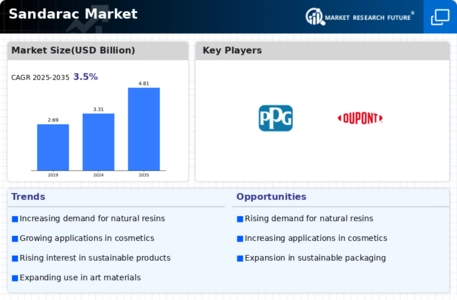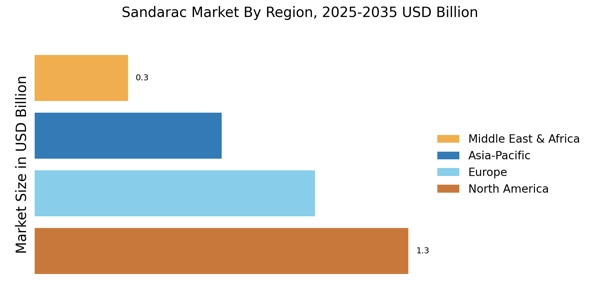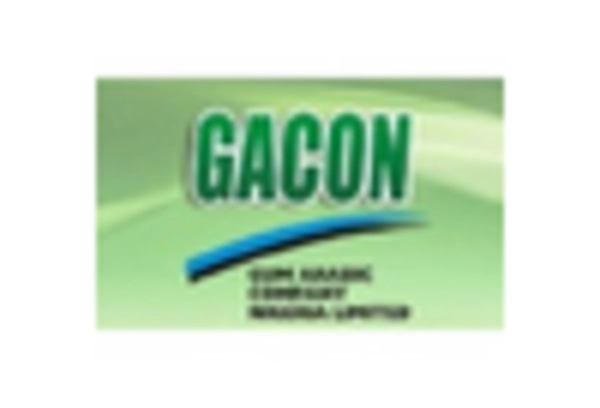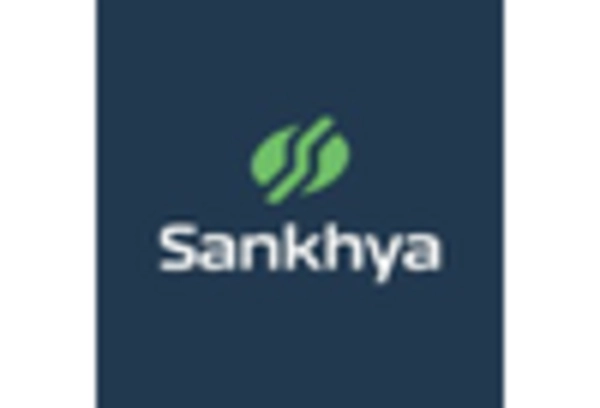Artisanal Craftsmanship
The resurgence of artisanal craftsmanship is a notable driver within the Sandarac Market. As consumers increasingly seek unique, handcrafted products, the demand for Sandarac Market resin has surged, particularly in the realms of fine arts and traditional crafts. Artisans are utilizing Sandarac Market for its desirable properties, such as its ability to create high-quality varnishes and finishes. This trend is not only revitalizing traditional techniques but also fostering a new appreciation for the skill and artistry involved in handmade goods. Market data indicates that the artisanal segment is expanding, with a significant percentage of consumers willing to pay a premium for products that reflect craftsmanship and authenticity. Consequently, businesses that align with this artisanal movement may find themselves well-positioned to capture a dedicated customer base, thereby enhancing their competitive edge in the Sandarac Market.
Sustainability Initiatives
The Sandarac Market is increasingly influenced by sustainability initiatives, as consumers and manufacturers alike prioritize eco-friendly practices. The demand for natural and sustainably sourced materials is on the rise, with a notable increase in the use of Sandarac Market resin in various applications, including cosmetics and art supplies. This shift towards sustainability is not merely a trend; it reflects a broader societal movement towards environmental responsibility. As a result, companies within the Sandarac Market are investing in sustainable harvesting methods and transparent supply chains, which could enhance their market position. Furthermore, regulatory frameworks are evolving to support sustainable practices, potentially leading to increased market opportunities for those who adapt swiftly. The emphasis on sustainability may also drive innovation in product development, as businesses seek to meet the growing consumer demand for environmentally friendly options.
Growing Demand in the Cosmetic Sector
The growing demand for natural ingredients in the cosmetic sector is significantly impacting the Sandarac Market. As consumers become more conscious of the ingredients in their personal care products, the appeal of Sandarac Market resin, known for its natural properties, is increasing. Market data indicates that the cosmetic industry is shifting towards formulations that prioritize sustainability and natural sourcing, which aligns well with the characteristics of Sandarac Market. This trend is likely to drive innovation in product development, as brands seek to incorporate Sandarac Market into their offerings, particularly in skincare and haircare products. The Sandarac Market may benefit from this trend, as companies that successfully integrate Sandarac Market into their formulations could capture a larger share of the growing market for natural cosmetics. This shift not only reflects changing consumer preferences but also presents opportunities for businesses to differentiate themselves in a crowded marketplace.
Cultural Heritage and Traditional Uses
Cultural heritage plays a pivotal role in shaping the Sandarac Market, as traditional uses of Sandarac Market resin continue to be valued across various cultures. The resin has historical significance in art, music, and religious practices, which contributes to its ongoing relevance. As societies increasingly recognize the importance of preserving cultural heritage, the demand for Sandarac Market in traditional applications is likely to remain robust. Market Research Future suggests that regions with rich cultural histories are experiencing a revival in the use of Sandarac Market, particularly in the production of traditional musical instruments and ceremonial items. This trend not only supports local economies but also fosters a sense of identity and continuity. Businesses that emphasize the cultural significance of Sandarac Market may find opportunities to engage consumers who are passionate about heritage and authenticity, thereby strengthening their position in the market.
Technological Advancements in Processing
Technological advancements in processing techniques are emerging as a key driver in the Sandarac Market. Innovations in extraction and refinement processes are enhancing the quality and yield of Sandarac Market resin, making it more accessible for various applications. These advancements may lead to cost reductions and improved efficiency, which could benefit manufacturers and consumers alike. Furthermore, the integration of technology in production processes allows for better quality control and consistency, which is crucial for maintaining product standards in the Sandarac Market. As companies adopt these new technologies, they may also discover novel applications for Sandarac Market, potentially expanding its market reach. The ongoing evolution of processing methods suggests a promising future for the Sandarac Market, as businesses strive to meet the demands of an increasingly competitive landscape.














Leave a Comment